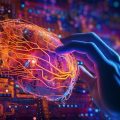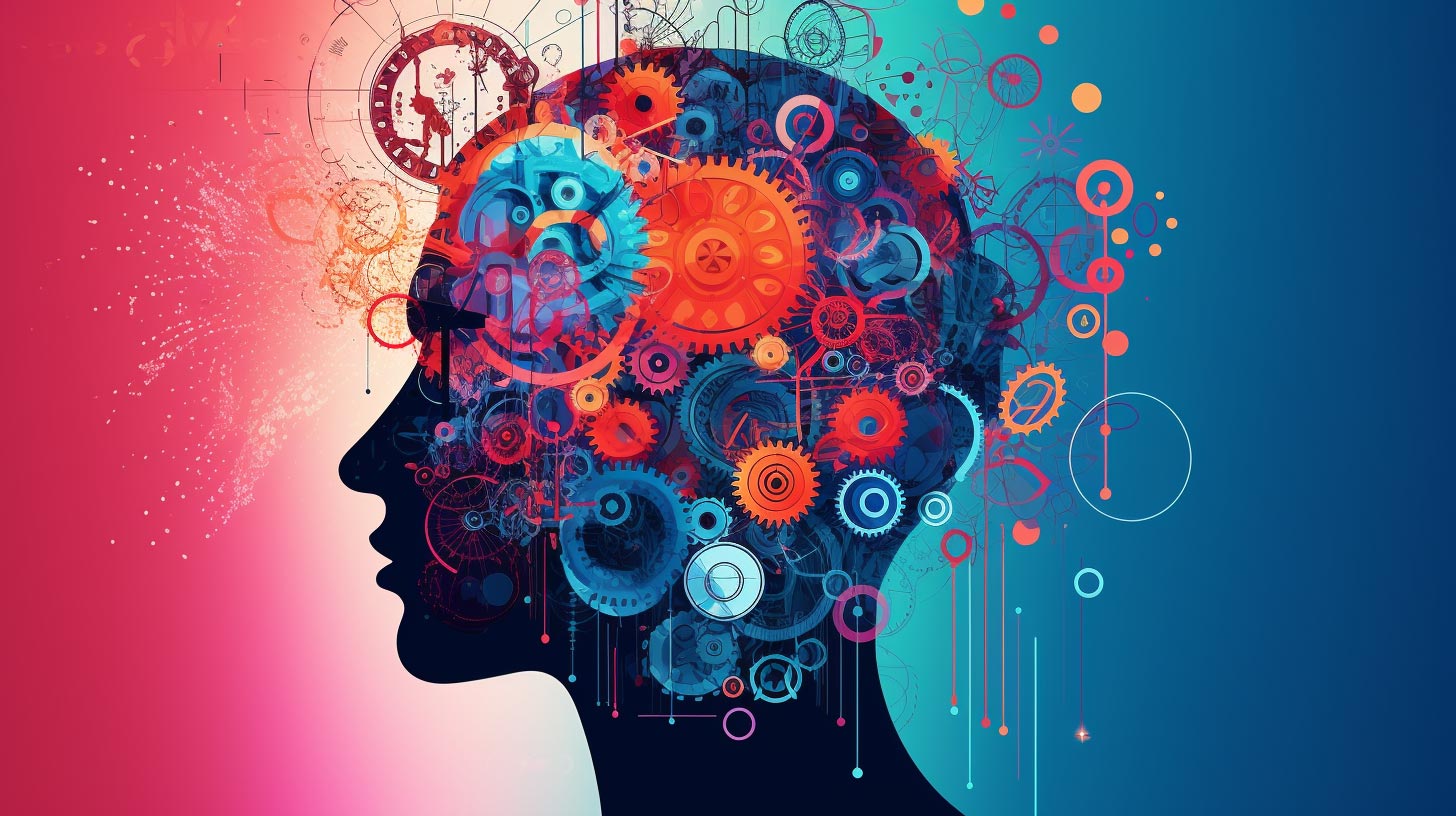To truly comprehend the essence of AI, it is essential to delve into its core components and understand their significance.
Data forms the bedrock upon which intelligent systems are built, serving as the fuel that powers their learning and decision-making capabilities.
Algorithms act as the guiding principles that enable machines to process this vast amount of data and extract valuable insights.
Lastly, computing power plays a crucial role in empowering these systems to handle complex computations at lightning-fast speeds.
Machine learning (ML), a subset of AI, lies at the heart of many groundbreaking applications we witness today.
By harnessing massive amounts of data, ML algorithms can uncover patterns and relationships that would have otherwise remained hidden from human eyes.
From image recognition to fraud detection, ML techniques are revolutionizing various industries by providing highly accurate predictions and automated decision-making.
Natural Language Processing (NLP) and Computer Vision (CV) further expand the capabilities of AI systems by enabling machines to understand human language and interpret visual information, respectively.
NLP allows computers to analyze text, comprehend meaning, and respond intelligently – opening doors for applications like chatbots or voice assistants.
On the other hand, CV empowers machines with the ability to perceive visual content such as images or videos – leading to advancements in fields like autonomous vehicles or facial recognition technology.
By understanding these building blocks – data, algorithms, and computing power – one can grasp how AI has transformed from a futuristic concept into a practical reality with limitless potential.
The synergy between these components drives innovation across industries while offering solutions to some of humanity’s most pressing challenges.
As we continue our exploration into this fascinating realm, it becomes evident that mastering these foundational elements will pave the way for even more remarkable achievements in artificial intelligence.
Key Takeaways
- Data is the foundation for intelligent systems, fueling their learning and decision-making capabilities.
- Algorithms guide machines in processing data and extracting insights.
- Computing power is crucial for handling complex computations at high speeds.
- Machine learning techniques revolutionize industries with accurate predictions and automated decision-making.
The Building Blocks of AI:
First and foremost, data is the lifeblood of AI. It serves as the foundation upon which intelligent machines learn and make decisions. In order to train an AI system, a vast amount of high-quality data is required. This data can come in various forms such as text, images, videos, or sensor readings.
The more diverse and representative the data is, the better equipped the AI system will be to handle real-world scenarios.
Data collection methods include manual labelling by humans or automated processes like web scraping or sensor data capture. Once collected, this raw data needs to be preprocessed and cleaned to remove any noise or inconsistencies before it can be used for training machine learning models.
Next up are algorithms – the mathematical instructions that enable machines to process information and perform tasks intelligently. Algorithms form the core logic behind AI systems by providing step-by-step instructions on how to analyze input data and generate output predictions or actions.
Machine learning algorithms play a crucial role in enabling AI systems to learn from experience without being explicitly programmed.
They use statistical techniques to identify patterns in large datasets and make predictions or decisions based on those patterns.
There are different types of machine learning algorithms such as decision trees, neural networks, support vector machines (SVM), and k-nearest neighbours (KNN). Each algorithm has its own strengths and weaknesses depending on the problem at hand.
Lastly, computing power plays a vital role in driving advancements in AI technology. As AI models become more complex with larger datasets, they require significant computational resources for training and inference tasks. High-performance hardware accelerators like graphics processing units (GPUs) have revolutionized deep learning by speeding up computations involved in training neural networks.
Additionally, cloud computing platforms provide scalable and on-demand computational resources for AI development and deployment. The availability of powerful computing infrastructure has paved the way for breakthroughs in AI research and applications.
Data, algorithms, and computing power are the fundamental building blocks of AI. Data provides the necessary input for training AI systems, algorithms enable intelligent processing of that data, and computing power empowers AI models to handle complex tasks efficiently.
By understanding these key components, we can appreciate the underlying mechanisms that drive the development and success of artificial intelligence.
Understanding AI
Artificial Intelligence (AI) is a field of computer science that focuses on developing intelligent machines capable of performing tasks that typically require human intelligence. These machines are designed to analyze data, make decisions, solve problems, and learn from experience.
By leveraging advanced algorithms and computing power, AI systems have the potential to automate complex tasks, improve decision-making processes, and enhance efficiency across a wide range of industries.
AI is used in healthcare to assist in diagnosing diseases, monitoring patient health, and developing personalized treatment plans. In finance, AI systems are used for fraud detection, risk assessment, and algorithmic trading.
The transportation industry benefits from AI through self-driving cars that rely on machine learning algorithms to navigate roads safely.
The education sector utilizes AI for personalized learning experiences and intelligent tutoring systems. The manufacturing industry employs AI for quality control, predictive maintenance, and optimization of production processes.
Marketing also benefits from AI through recommendation systems that suggest products based on customer preferences.
AI has become an integral part of our lives as it continues to transform various industries by automating complex tasks and enhancing decision-making processes. Through advanced algorithms and computing power, AI systems are able to mimic human intelligence and learning capabilities.
As we explore further into the world of AI technologies such as machine learning (ML), natural language processing (NLP), and computer vision (CV), we unlock new opportunities for innovation across sectors ranging from healthcare to finance, transportation to education – ultimately reshaping the way we live and work.
Machine Learning Basics
Machine learning (ML) is a subset of artificial intelligence (AI) that focuses on building algorithms and statistical models.
These algorithms allow computers to analyze large amounts of data, identify patterns, and make predictions or decisions based on those patterns.
At its core, ML relies on three main types: supervised learning, unsupervised learning, and reinforcement learning. In supervised learning, the algorithm is trained using labelled data, where each input has a corresponding output. The algorithm learns from this labelled data to make predictions or classifications for new unseen inputs.
Unsupervised learning, on the other hand, deals with unlabeled data. The algorithm identifies patterns or structures within the data without any predefined labels or categories. It can be used for tasks like clustering similar instances together or reducing dimensions in complex datasets.
Lastly, reinforcement learning involves an agent interacting with an environment and receiving feedback in the form of rewards or penalties based on its actions. Through trial and error, the agent learns to take actions that maximize its cumulative reward.
To achieve successful machine learning outcomes, it’s crucial to have high-quality training data as input. This means having a diverse dataset that accurately represents the problem domain and covers various scenarios. Additionally, choosing suitable algorithms is essential as different algorithms excel in different types of problems. Finally, computing power plays a significant role in ML since complex computations are required for training large models with vast amounts of data.
Machine Learning has revolutionized many industries by enabling automation and intelligent decision-making processes at scale. By understanding these basic building blocks of machine learning – data quality and diversity along with appropriate algorithms powered by advanced computing infrastructure – you can unlock endless possibilities in creating innovative solutions across various domains such as healthcare diagnostics, fraud detection systems, and personalized recommendation engines just to name a few!
Natural Language Processing (NLP)
NLP, the enchanting realm of AI that unlocks the power of human language, captivates with its ability to understand, analyze, and generate textual data.
It encompasses a wide range of techniques and algorithms that enable computers to process and interpret natural language in a way that’s similar to how humans do.
Through NLP, machines can comprehend the meaning behind words, sentences, and even entire documents.
One fundamental task in NLP is sentiment analysis, which involves determining the emotional tone expressed in text. This technique finds applications in social media monitoring, customer feedback analysis, and brand reputation management.
Another important application of NLP is machine translation, which enables computers to automatically translate text from one language to another. This has revolutionized communication across borders by facilitating real-time translation services.
NLP also plays a crucial role in chatbots and virtual assistants by enabling them to understand user queries and provide relevant responses. By analyzing sentence structure and extracting key information from user input, these systems can effectively respond to user queries or perform tasks on their behalf.
NLP is an indispensable field within AI that allows machines to work with human language data. Its applications are vast and varied, ranging from sentiment analysis to machine translation and chatbots.
With advancements in this field continuing at a rapid pace, we can expect further breakthroughs that enhance our interactions with technology through natural language understanding and generation capabilities.
Computer Vision (CV)
CV is a field of AI that focuses on developing algorithms and techniques to enable machines to analyze and process images and videos. By mimicking human vision, CV systems can detect objects, classify images, segment images into different regions, track moving objects, and even recognize faces.
The applications of CV are vast and varied. In healthcare, CV is used for medical image analysis, allowing doctors to detect diseases like cancer at an early stage. Autonomous vehicles rely on CV systems to perceive their surroundings, identify pedestrians and obstacles, and make informed decisions while driving. Security and surveillance systems employ CV algorithms to monitor public areas for suspicious activities or identify individuals from surveillance footage. Retail businesses use CV technology for inventory management by automatically counting products on shelves or tracking customer behaviour in stores.
Advancements in computer hardware have significantly contributed to the progress of CV. Powerful GPUs (graphics processing units) are capable of handling complex calculations required for image processing tasks at lightning-fast speeds. Deep learning frameworks such as TensorFlow and PyTorch provide developers with tools to build sophisticated neural networks for CV applications.
The field of Computer Vision continues to push the boundaries of what machines can achieve with visual information. From healthcare to autonomous vehicles to security systems, CV has revolutionized various industries by enabling machines to see and comprehend the world around us. As technology advances further, we can expect even more exciting developments in this fascinating domain.
Frequently Asked Questions
How does the availability of large amounts of data impact the performance of AI systems?
The availability of large amounts of data significantly impacts the performance of AI systems. It allows for more accurate training and validation, leading to improved algorithms and better decision-making capabilities.
What are some common challenges in training machine learning models?
Common challenges in training machine learning models include overfitting, underfitting, lack of labelled data, data quality issues, selecting appropriate algorithms and hyperparameters, computational limitations, and ethical considerations such as bias and fairness.
Can you provide examples of real-world applications where natural language processing is being used?
Natural Language Processing (NLP) is used in chatbots to provide automated customer support, sentiment analysis to analyze social media feedback, language translation for multilingual communication, and information retrieval for search engines.
How does computer vision technology contribute to advancements in autonomous vehicles?
Computer vision technology contributes to advancements in autonomous vehicles by enabling them to perceive and understand their surroundings through visual data. This allows vehicles to navigate, detect objects, recognize road signs, and make informed decisions for safe and efficient driving.
What are the limitations of current computer vision algorithms in object detection and recognition?
Current computer vision algorithms in object detection and recognition have limitations. These include difficulties in handling occlusions, variations in lighting and background, complex scenes, and small object detection. Researchers are actively working on improving these algorithms to overcome these challenges.








Leave a Reply